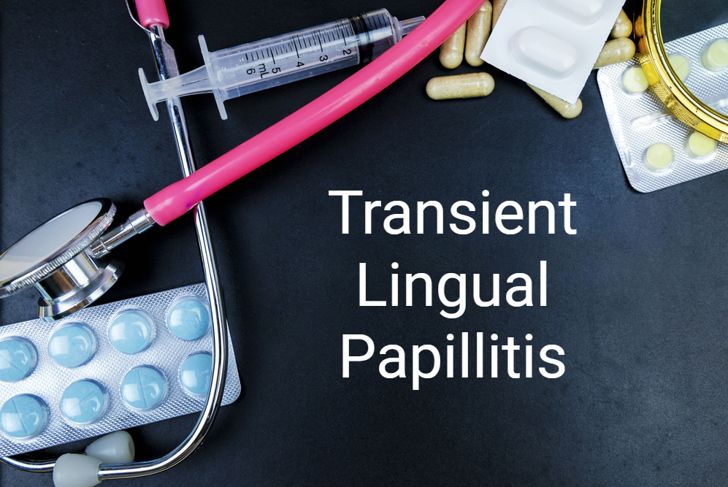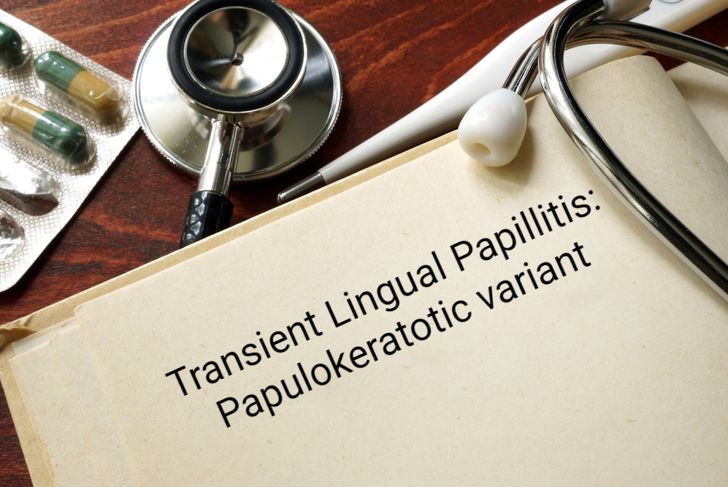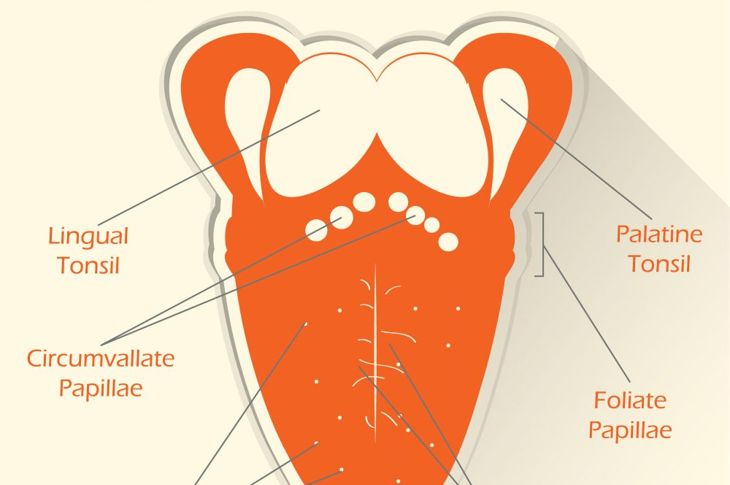Transient lingual papillitis is commonly called lie bumps or liar’s bumps. They are caused by the swelling of small papillae or bumps on the tongue. Researchers believe the condition is common but underdiagnosed and warrants more studies. Improved recognition and understanding of transient lingual papillitis will help avoid unnecessary treatments and tests for other conditions. It could also assist doctors and patients in determining the triggers, and reducing occurrence.
Presentation
Transient lingual papillitis often develops quickly, with one or more small red swollen papillae appearing over a couple of hours or instantaneously. These masses on the front top of the tongue are typically between two and three millimeters across and are painful and sensitive to hot and cold. They generally resolve on their own within one to four days, but some can persist for as long as a month.
Localized Variant
There are three types of transient lingual papillitis. The first is the localized variant. It presents as swelling of one or more papillae on the tip, side, and top of the tip of the tongue. This type most often affects females. The swollen bumps may have normal coloring, or they may be red, white, or yellow. They are moderately painful and can cause difficulty in feeding or burning, itching, or tingling.
Generalized Variant
The generalized variant of transient lingual papillitis involves a more of the papillae and affects children around 3.5 years old, possibly spreading to affect other family members. Like the localized form, this variant can appear red, yellow, white, or normal in color and may cause moderate pain and sensitivity to hot and cold foods.
Papulokeratotic Variant
The third variant is the papulokeratotic variant. This type is more generalized, covering a larger area of the tongue. The swollen papillae appear white or whitish-yellow and are largely painless. While other variants usually resolve in a few days, this variant often lasts for several weeks or months.
Chronic Lingual Papillitis
The papulokeratotic variant may last for weeks, but it should not be confused with chronic lingual papillitits, which presents differently than transient variants. Chronic lingual papillitis occurs in adults and affects a variety of papillae. It presents as painless enlarged papillae on the top of the tongue and can be localized or spread across the tongue.
Tongue Anatomy
Papillae are the small bumps on the top of the tongue. There are three types. Filiform papillae are the most common and spread evenly across the surface of the tongue. They do not contain taste buds. Pointed filiform papillae are the rougher bumps that help with chewing and licking. Transient lingual papillitis affects the fungiform papillae of the tongue. These appear mostly on the front of the tongue and are red and dome-shaped.
Causes
The cause of transient lingual papillitis is unknown. Researchers believe that many factors contribute to it, possibly including local irritation, compulsive movements, stress, poor nutrition, thermal injury, eating spicy foods, drinking alcohol, or smoking. Gastrointestinal disorders and hormone fluctuations in menopause may also be contributing factors. Household transmission can occur during childhood.
Diagnosis
Diagnosis of transient lingual papillitis is usually through a physical exam. In cases where a diagnosis is not straightforward, the patient may require a biopsy. Some benign masses mimic transient lingual papillitis, like pyogenic granuloma tumors and giant cell fibroma. It also shares some characteristics with the strawberry tongue seen in scarlet fever and Kawasaki disease.
Management
Management focuses on symptom relief. Some cases of transient lingual papillitis are painful and treated with topicals that coat the tongue, local anesthetics, or mouthwashes. Oral analgesics are generally not effective at relieving symptoms or shortening the duration. Physicians may also recommend that people with transient lingual papillitis avoid candy and chewing gum.
Outlook
Transient lingual papillitis usually resolves on its own in a matter of days. Only the papulokeratotic variant is known to reoccur. Possibly triggers that may cause this variant to come back include allergens and trauma.

 Home
Home Health
Health Diet & Nutrition
Diet & Nutrition Living Well
Living Well More
More




















